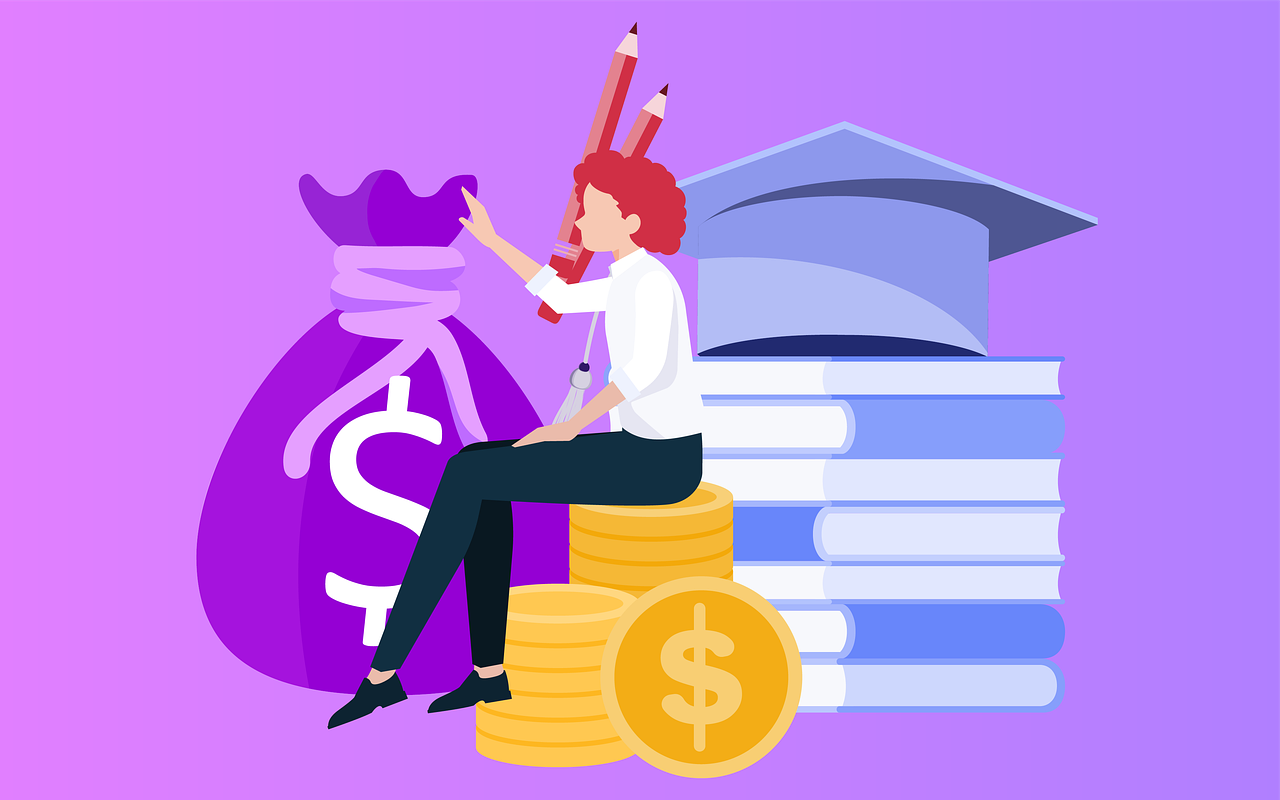The interest rates for personal loans are ever-changing. The best way to get the lowest rate is to shop around and compare rates from different lenders. This article will give you some tips on finding the best deal.
If you’re looking for a loan, you must know your options. Rates change often, and the only way to be sure you’re getting the best possible deal is by comparing them all!
What is a personal loan, and how does it work?
A personal loan is a way to borrow money from a bank or other lending institution. Depending on your contract with your lender, you usually have fixed or adjustable rates. Unsecured personal loans are typically given to people with assets and collateral, so they’re more accessible than business loans for people to get approved for. Everyday use of this type of loan is to consolidate debt.
Personal loan interest rates are significantly lower than they could hope to get from a credit card for many borrowers. Plus, it’s also important to realize that the interest on a personal loan is usually fixed. So if market rates rise significantly, your personal loan interest rate will stay the same.
An applicant typically will learn their loan approval status in less than a minute. Once a loan is approved, funds take between one and four days after bank account verification to land in the borrower’s account. However, funding varies depending on the financial institution and when the loan was processed.
How do I get the best personal loan rates?
If your score is low, look to improve it first. Some lenders let you prequalify with a soft credit check, enabling you to see what type of loan terms you could receive with your current score. Then, apply with the provider once you find a loan that offers favorable terms for your financing needs.
Competition among personal lenders has never been higher, and as a result, some lenders offer unique perks that can also factor into the decision process. For example, one lender allows borrowers to skip a monthly payment (and add an extra cost at the end of the loan) at any point after making 12 on-time payments.
The best way to get the lowest rate on a personal loan is by shopping around and comparing rates from different personal loan lenders. You can use websites like Bankrate or LendingTree to compare offers from various banks and credit unions. Be sure to read all of the terms and conditions before you apply for a loan, so you know what you’re getting into.
Start by evaluating your needs.
What do you need the money for? How much do you need to borrow? What’s your credit history and score like? Start comparing rates once you have a good idea of what you’re looking for. You need to know if you can afford the monthly payments, and you don’t want to be surprised by any hidden fees.
Do your research.
Before you apply for a loan, it’s essential to research and compare rates from different lenders. You can use websites to compare offers from various banks and credit unions. Be sure to read all of the terms and conditions before you apply for a loan, so you know what you’re getting into.
Compare interest rates and terms.
When comparing loans, make sure to look at the interest rates and terms. The interest rate is how much you’ll be paying on a loan each year. The time is how long you have to pay it back. So you want to find a loan with a low-interest rate and a short term. That way, you’ll pay less in interest, and you won’t be stuck with the loan for a long time.
Look for special offers.
Some lenders offer special deals or discounts if you set up automatic payments or direct deposits. If you’re considering a lender, ask about any special offers they have. You might be able to save money by taking advantage of one of these deals.
Be aware of scams.
Unfortunately, there are a lot of scammers out there who try to take advantage of people looking for loans. Be aware of offers that seem too good to be true. If something seems fishy, it probably is. Don’t give anyone personal information or money until you’ve verified.
Decide which lender is right for you.
After you’ve compared interest rates, terms, and special offers, it’s time to decide which lender is right for you. First, consider the bank or credit union with your checking account or other assets. This can be an excellent place to start because they may offer you a lower rate on the personal loan since you’re already a customer.
Apply and get approved.
Once you’ve chosen a lender, it’s time to apply for the loan. The process is usually pretty quick and easy. First, you’ll need to provide some personal information and financial documents. Once you’re approved, the money will be deposited into your account, and you can start using it however you need to.
Review the loan agreement carefully.
Once you’re approved for the loan, be sure to review the loan agreement carefully. This document will outline all of the terms and conditions of your loan, including the interest rate, term, repayment schedule, and any fees or charges. Be sure you understand everything before you sign the agreement.
What are the benefits of refinancing your credit card debt with another creditor?
Many people struggle to pay off their credit card debt. If you’re one of those and want a way out, refinancing your debt could be the best option for you.
There are many benefits to this type of personal loan, including:
- Lowering your interest rate will help you manage repayment better because it’s easier on your budget.
- When you refinance with another creditor, all other cards must stay untouched as long as they remain open.
- You’ll have more time before starting payments since there is no immediate requirement after approval.
- There may also be different payment terms depending on what suits your needs best! The borrower has an adjustable rate, which means they can change the monthly payment amount and schedule.
Requirements to get a personal loan?
The requirements for a personal loan will depend on the lender. However, you must have some basic things to apply: You need to be at least 18 years old – if you’re younger than this, then it’s likely that specific lenders won’t consider your application.
If you’ve been rejected before by other banks or financial institutions, they may still give consideration depending on what caused this and how long ago it happened.
In addition to meeting general eligibility criteria such as being an Australian citizen or permanent resident with a regular income within Australia, each bank has its lending policies, so make sure you know exactly what is required from borrowers.
How much can I borrow?
Most banks offer loans between $5000 and $100000. Some even allow applicants to borrow up to $150000. But, of course, the amount you can apply for will depend on the lender and your personal financial circumstances.
What are the repayment terms?
The repayment terms of a personal loan can vary depending on the lender. However, most loans have a minimum repayment period of 12 months and a maximum of 60 months. The length of your repayment term will impact how much you end up paying in interest, so it’s essential to consider this before you apply.
What are the fees?
Most personal loans come with various fees, including an application fee, origination fee, monthly service fee, late payment fee, and more. Be sure to review all of the expenses associated with any loan before applying.
How do I repay my personal loan?
Your loan agreement will outline the repayment method for your personal loan. Most lenders allow borrowers to make manual repayments via online banking or phone or set up automatic payments from their bank account. Whichever way you choose to repay your loan, be sure to budget for this monthly expense.
If you’re looking for a personal loan in the U.S., it’s essential to do your research before settling on any one option. By comparing interest rates, fees, and other conditions, you can find a loan that fits your needs and budget perfectly.
Tips for Comparing Low-interest Personal Loans
Even though there are many low-interest personal loan options, finding the best rate for your financial situation can be challenging. Several factors determine what you’ll pay in interest over time which includes:
The length of time until repayment: If you’re borrowing money to consolidate debts, then it’s wise to choose a shorter term so that monthly repayments will go towards paying off this debt sooner rather than later.
Having said that, if refinancing credit card balances is part of your plan, some people find longer terms more affordable because they help lower overall costs each month the amount you borrow – may seem counterintuitive but applying for a higher sum means having access to more funds.
However, even more, significant sums, lenders usually have limits on how much they’re willing to give without charging higher interest rates. So, it’s important not to borrow more money than you need just because it’s available.
The annual percentage rate (APR): This is the interest rate that will be applied to your loan amount for the year. It’s essential to compare APRs when shopping around, as even a tiny difference can mean hundreds of dollars in extra costs over time.
Fees: Some lenders charge an origination fee, a one-time charge for processing your loan application. Others might have a prepayment penalty, which means you’ll be charged a fee if you repay your loan early.
It’s essential to consider all of these factors when shopping around for the best personal loan rates. By doing so, you can save money and find the most affordable loan for your financial needs.
Best personal loans of September 2021
You can file for a payday loan with a low-interest credit union or online lenders. If you have approval, you should be receiving your funds within a few business days. The loan with the lowest interest and the most appropriate payment schedule is usually the best for your situation.
Marcus by Goldman Sachs specializes in debt consolidation loans with broad loan amounts and a relatively low APR cap of 19.99 percent. With a debt consolidation loan, you borrow money with one loan to pay off many smaller loans or credit cards that were charging much higher interest rates.
You can use them to cover many expenses such as medical bills, weddings, home improvements, vacations, unexpected problems, and other expenses like medical bills and holidays to support those. The lowest rate is reserved for people with high credit scores, and the best rate is commonly reserved for people with higher scores. The best personal loan rates for this month are shown below.
The following are some tips you can use when looking into low-interest personal loans:
Be sure about your debt consolidation plan – consolidating debt is an excellent way to reduce monthly payments and interest fees, but only if you’re committed and motivated enough to pay off all those balances as quickly as possible. Look around online first because most people do.
Your maximum loan amount may vary depending on your loan purpose, income, and creditworthiness. Your verifiable income must support your ability to repay your loan. Marcus by Goldman Sachs is a Goldman Sachs Bank USA, and all loans are issued by Goldman Sachs Bank USA, Salt Lake City Branch.
What is the minimum credit score to get a personal loan?
When choosing the best option among low-interest loans, borrowers should consider their financial situation and how much they can afford to pay back each month. For example, if your credit score is below 600, you might have trouble finding affordable options for you in terms of monthly payments, which means it will be harder to pay off the debt quickly.
What are the best personal loans for people with bad credit?
When choosing the best option among low-interest loans, borrowers should consider their financial situation and how much they can afford to pay back each month. For example, if your credit score is below 600, you might have trouble finding affordable options for you in terms of monthly payments, which means it will be harder to pay off the debt quickly.
Payday loans.
You can file for a payday loan with a low-interest credit union or online lenders. If you have approval, you should be receiving your funds within a few business days. The loan with the lowest interest and the most appropriate payment schedule is usually the best for your situation.
In conclusion
To have the best personal loan rates, you should have a good credit score, use an online lender, and look for the lowest interest possible. You should also be aware of any prepayment penalties that might be attached to your loan agreement. By following these tips, you can save money on your personal loan and find the most affordable option for your financial needs.















